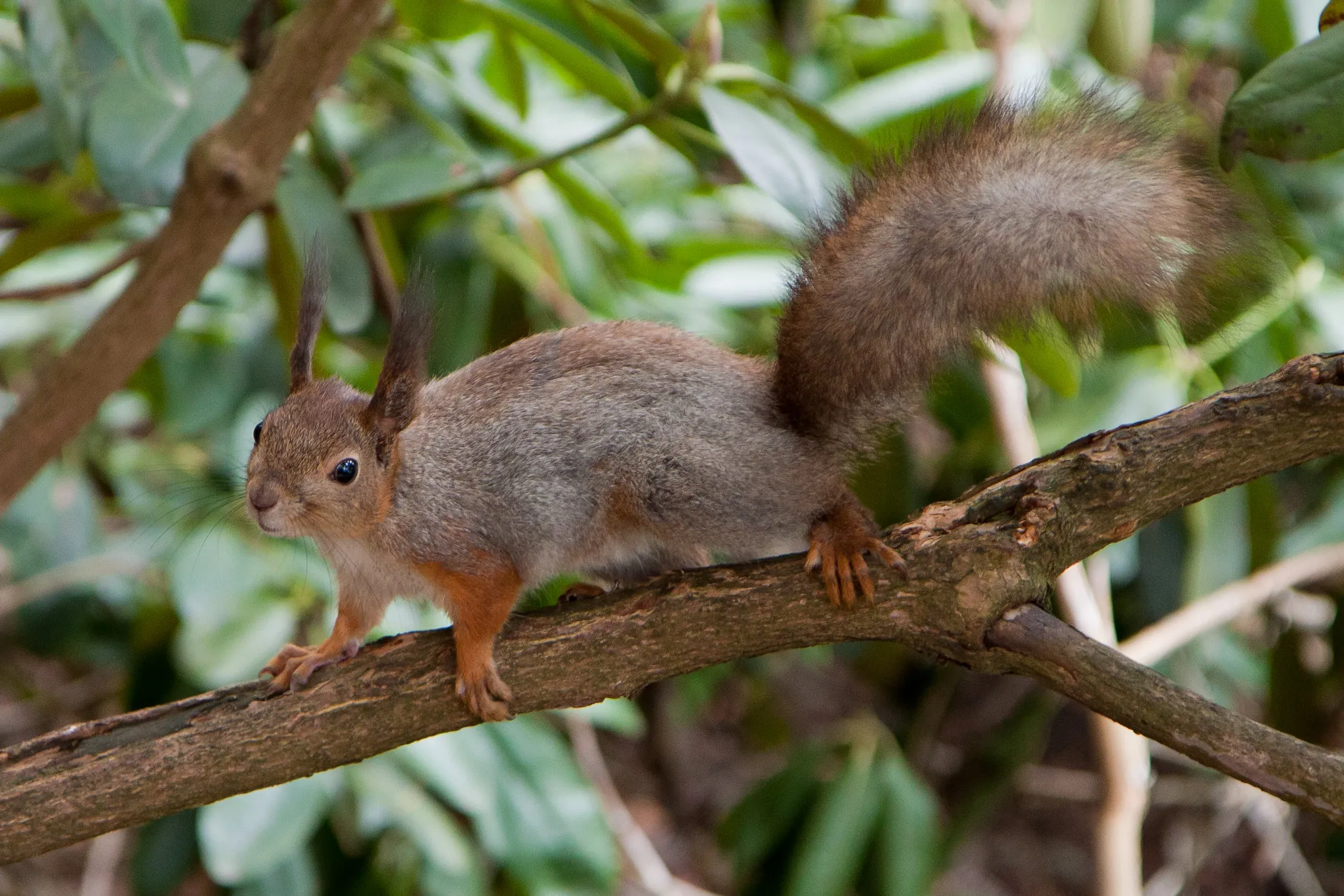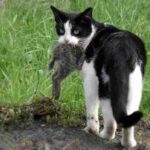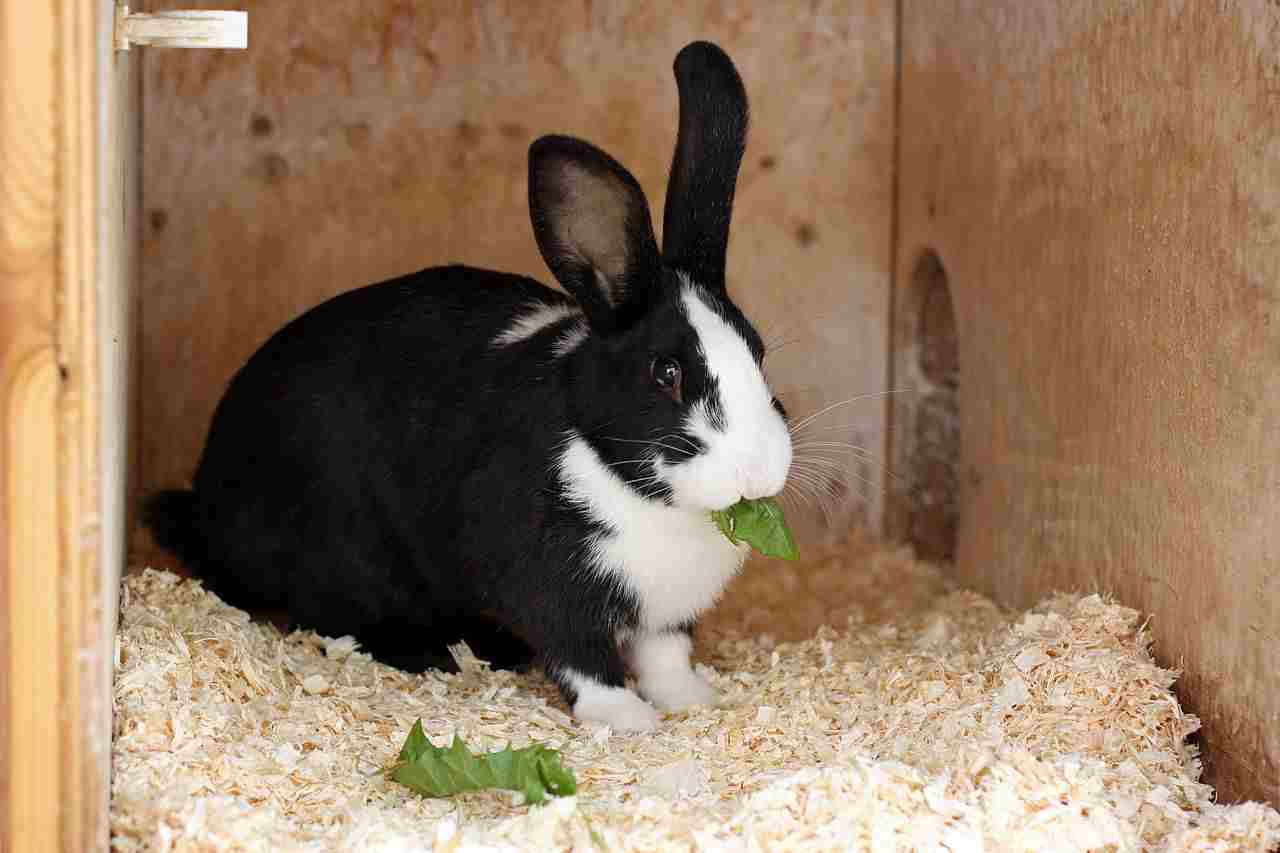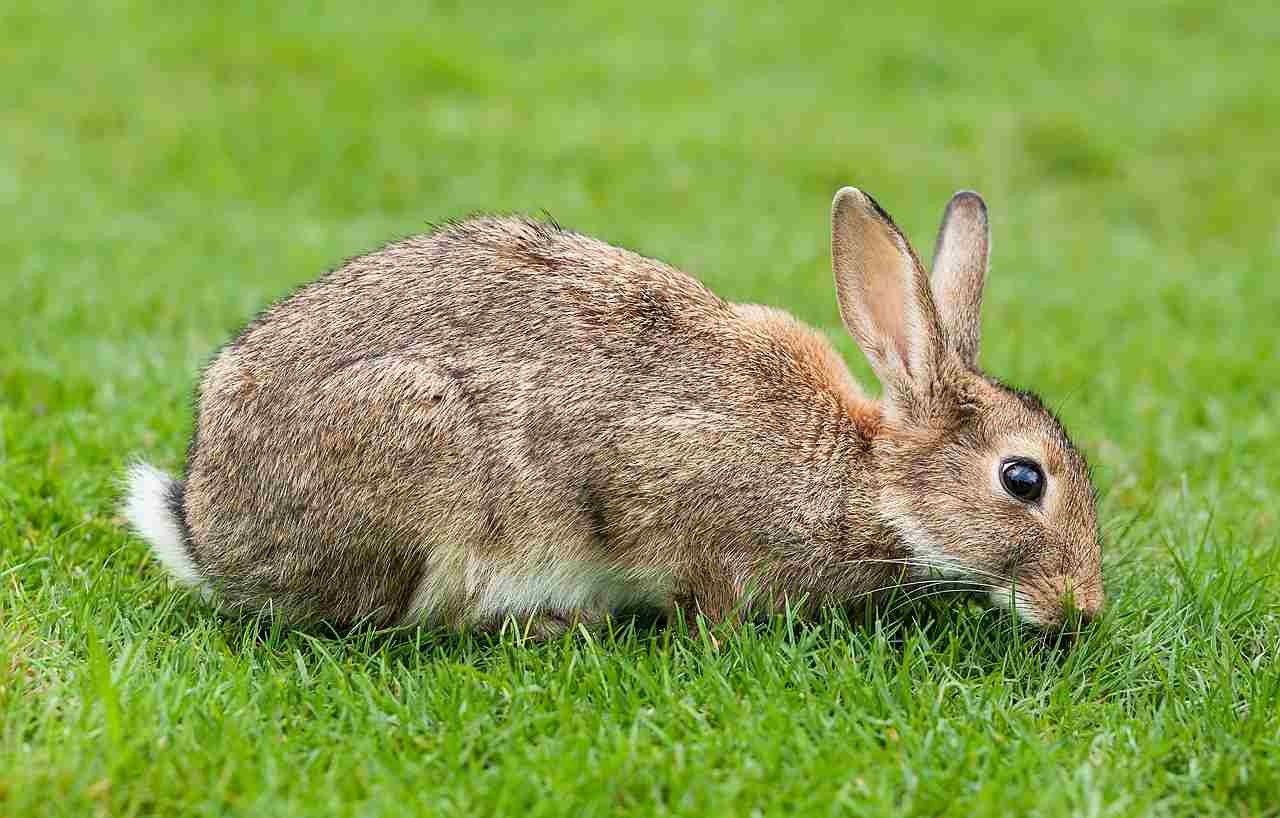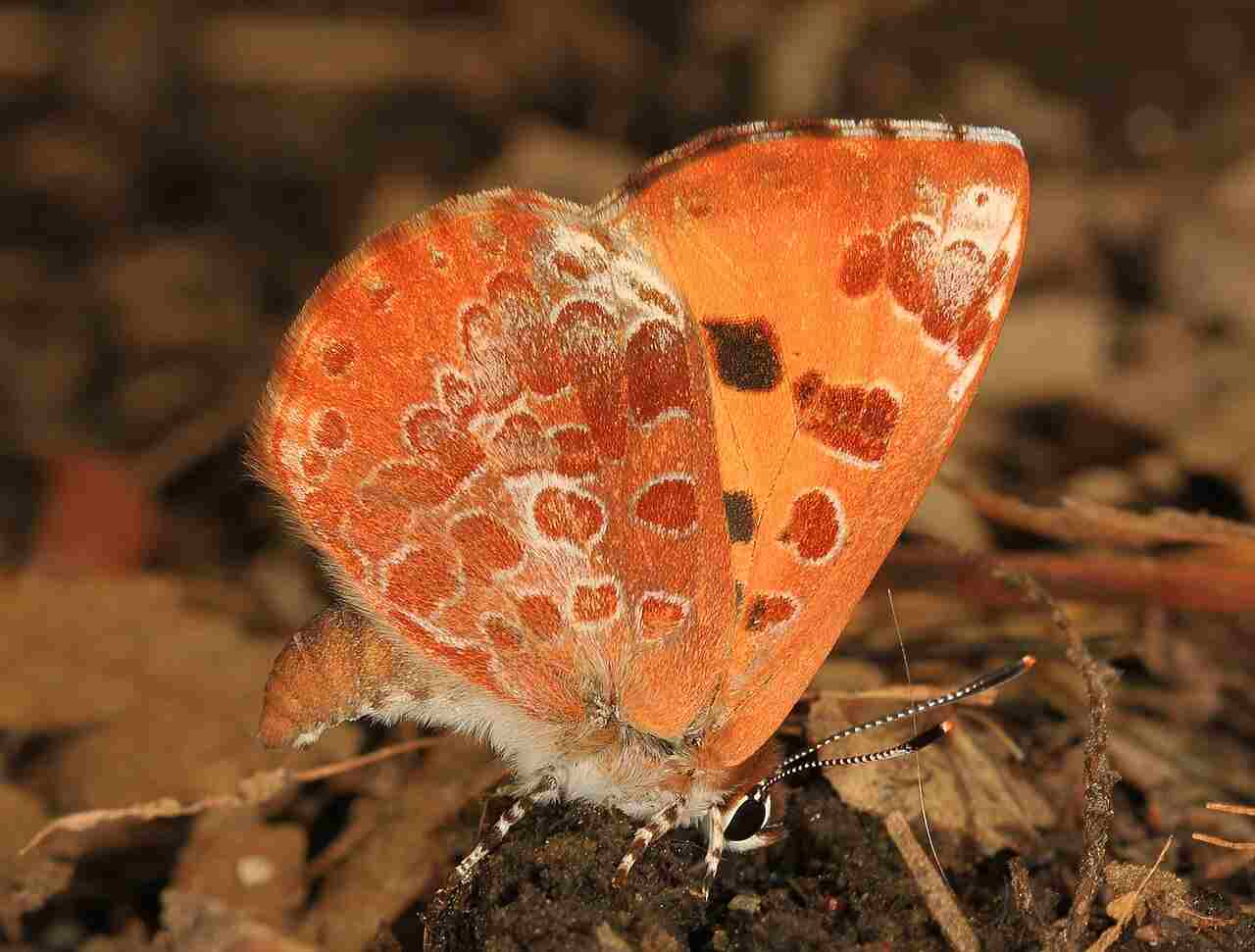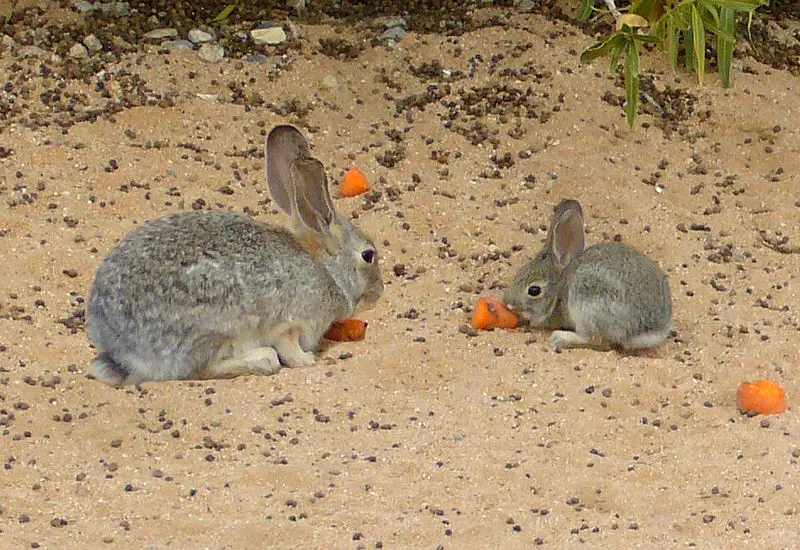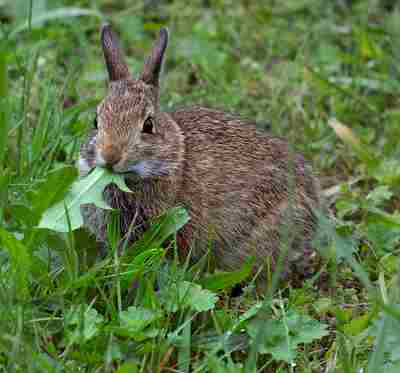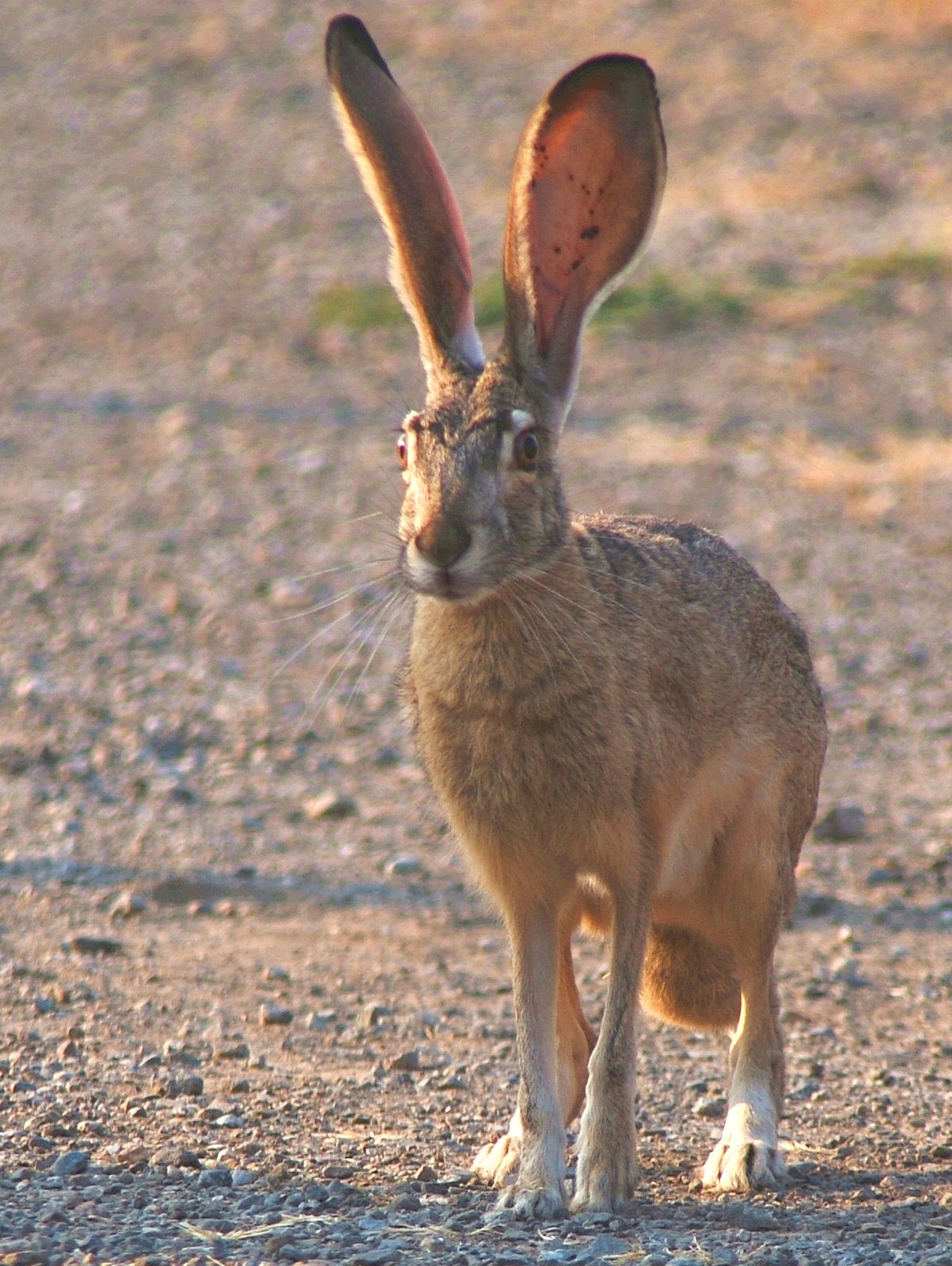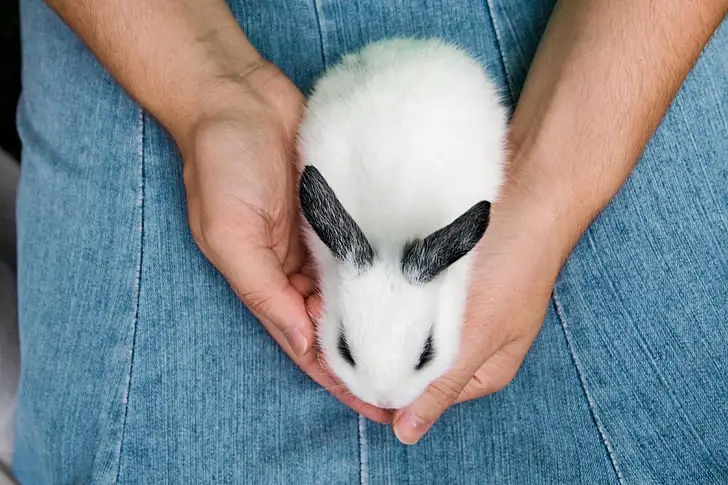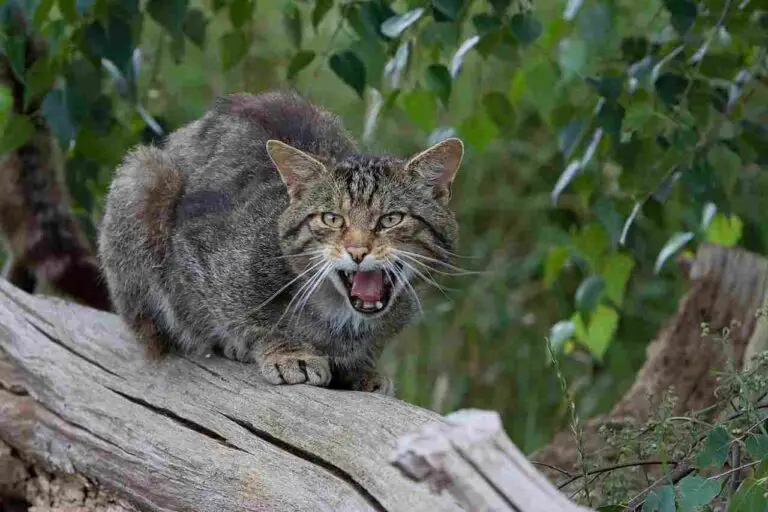9+ Primary Consumers in the Forest Discussed
Primary consumers in the forest are essential for shaping ecosystem dynamics and maintaining biodiversity. These include fruit bats, macaws, butterflies, and capybaras. Fruit bats are crucial for pollination and seed dispersal, while macaws play a vital role in forest regeneration through seed dispersal. Butterflies are significant pollinators, contributing to plant reproduction and ecosystem health. Capybaras, as herbivorous rodents, influence vegetation structure and nutrient cycling within their habitats.
1. Rabbit: A Keystone Herbivore in Forest Ecosystems
Rabbits are prominent primary consumers within forest ecosystems, playing crucial roles in maintaining ecological balance and biodiversity. As herbivores, they primarily feed on various vegetation, including grasses, herbs, and shrubs, shaping the structure and composition of plant communities.
Ecological Role:
Rabbits are keystone species, exerting significant influence on the surrounding ecosystem. Their foraging behavior affects plant distribution and abundance, which, in turn, cascades through the food web, impacting other organisms’ populations and dynamics. By consuming certain plant species selectively, rabbits prevent the dominance of particular plant species, promoting species diversity within the forest.
Feeding Habits:
Rabbits are predominantly herbivorous, with a diet consisting mainly of grasses and other green vegetation. They are known to consume a wide variety of plant species, often selecting young, tender shoots and leaves. Their feeding behavior can influence plant growth patterns, as they may selectively browse certain plants over others.
Reproduction and Population Dynamics:
Rabbits are prolific breeders, with the ability to reproduce rapidly under favorable conditions. Their high reproductive rate ensures the continuity of their population within forest ecosystems. However, population dynamics are also influenced by predation, disease, and resource availability.
Interactions with Other Species:
Rabbits serve as prey for numerous predators within the forest, including foxes, coyotes, owls, and snakes. Their presence supports the diverse predator guild within the ecosystem. Additionally, rabbits contribute to nutrient cycling through their feeding and excretion habits, enriching the soil with organic matter.
Ecosystem Services:
Despite being prey animals, rabbits provide essential ecosystem services. Their foraging behavior helps maintain plant diversity, which, in turn, supports various other organisms within the ecosystem. By regulating plant populations, rabbits indirectly contribute to soil stabilization and erosion control.
Conservation Status:
In some regions, rabbit populations face threats from habitat loss, fragmentation, and predation by invasive species. Conservation efforts often focus on preserving suitable habitat and managing populations to maintain ecological balance within forest ecosystems. Understanding the ecological role of rabbits is vital for implementing effective conservation strategies that ensure their persistence and the health of forest ecosystems they inhabit.
2. Deer: Iconic Herbivores Shaping Forest Dynamics
Deer are emblematic primary consumers within forest ecosystems, renowned for their browsing behavior and profound impact on vegetation dynamics. As large herbivores, they play pivotal roles in shaping forest structure, plant diversity, and ecosystem functioning.
Ecological Role:
Deer are keystone species, exerting considerable influence on forest ecosystems through their browsing habits. By selectively feeding on certain plant species, they shape vegetation composition and structure, influencing the distribution of plant communities and the abundance of various plant species.
Feeding Habits:
Deer are predominantly browsers, consuming a wide array of plant species, including woody shrubs, herbs, grasses, and tree seedlings. They preferentially feed on young, tender shoots and leaves, impacting plant growth and regeneration. Deer feeding behavior can alter forest understory composition and affect tree recruitment and successional processes.
Reproduction and Population Dynamics:
Deer populations are regulated by factors such as food availability, predation, and disease. They are known for their seasonal breeding patterns, with population dynamics influenced by the abundance of resources and environmental conditions. Deer exhibit high reproductive rates, contributing to population fluctuations within forest ecosystems.
Interactions with Other Species:
Deer serve as prey for numerous predators, including wolves, cougars, bears, and coyotes. Their presence supports diverse predator populations and contributes to trophic cascades within the ecosystem. Additionally, deer influence plant-insect interactions and nutrient cycling through their browsing and excretion habits.
Ecosystem Services:
Despite their status as prey animals, deer provide various ecosystem services. Their browsing behavior can enhance habitat diversity by creating heterogeneous vegetation structure, benefiting a wide range of wildlife species. Additionally, deer contribute to nutrient cycling through their consumption of plant material and subsequent deposition of feces.
Conservation Status:
Deer populations face challenges such as habitat loss, fragmentation, overhunting, and disease outbreaks. Conservation efforts often focus on managing deer populations to mitigate negative impacts on forest ecosystems while ensuring their persistence and ecological role. Sustainable management strategies aim to balance deer populations with available habitat resources, promoting forest health and biodiversity.
3. Squirrel: Agile Arboreal Foragers in Forest Canopies
Squirrels are nimble primary consumers inhabiting forest ecosystems, renowned for their arboreal lifestyle and seed dispersal activities. As omnivorous rodents, they contribute to forest dynamics through their foraging behavior, habitat modification, and interactions with plant communities.
Ecological Role:
Squirrels play essential roles in forest ecosystems as seed dispersers, influencing plant regeneration and community composition. Their foraging activities contribute to the spatial distribution of seeds, affecting plant recruitment and diversity within the forest canopy and understory.
Feeding Habits:
Squirrels have diverse diets, including seeds, nuts, fruits, fungi, insects, and occasionally bird eggs and nestlings. Their foraging behavior varies seasonally, with a focus on different food resources depending on availability. Squirrels’ caching behavior, where they bury or hide food items for later consumption, also affects seed dispersal and plant regeneration.
Reproduction and Population Dynamics:
Squirrel populations are influenced by factors such as food availability, predation, and habitat quality. They typically breed twice a year, with litter sizes varying depending on species and environmental conditions. Squirrel populations can fluctuate in response to resource abundance and predation pressure.
Interactions with Other Species:
Squirrels interact with various species within the forest ecosystem, including trees, plants, birds, and other mammals. They contribute to seed dispersal and forest regeneration by caching seeds, which may germinate and grow into new plants. Squirrels also serve as prey for predators such as raptors, snakes, and carnivorous mammals.
Ecosystem Services:
Squirrels provide ecosystem services through their seed dispersal activities, promoting plant diversity and regeneration within forest ecosystems. Their foraging behavior can also influence nutrient cycling and soil composition, as they consume and redistribute organic matter throughout their habitat.
Conservation Status:
While many squirrel species are abundant and widespread, some face threats such as habitat loss, fragmentation, and climate change. Conservation efforts may focus on preserving suitable habitat, managing populations in urban and suburban areas, and mitigating threats such as predation and disease to ensure the persistence of squirrel populations and their ecological contributions within forest ecosystems.
4. Agouti: Key Seed Dispersers in Neotropical Forests
Agoutis are essential primary consumers in neotropical forests, renowned for their role as seed dispersers and habitat engineers. These medium-sized rodents play crucial ecological roles in shaping forest structure, plant regeneration, and species diversity.
Ecological Role:
Agoutis are keystone species, influencing forest dynamics through their seed dispersal activities. They play a vital role in maintaining plant diversity and regeneration by dispersing seeds of various plant species across their habitat. Agoutis’ foraging behavior affects seed fate and spatial distribution, shaping plant communities and forest structure.
Feeding Habits:
Agoutis have a diverse diet, including seeds, fruits, nuts, and occasionally roots and fungi. They are known for their ability to crack open hard-shelled fruits and seeds using their strong jaws and teeth. Agoutis selectively feed on ripe fruits and seeds, contributing to the dispersal of numerous plant species within neotropical forests.
Reproduction and Population Dynamics:
Agouti populations are influenced by factors such as food availability, predation, and habitat quality. They typically breed throughout the year, with litter sizes varying depending on environmental conditions. Agoutis’ reproductive success and population dynamics are linked to seed availability and forest structure.
Interactions with Other Species:
Agoutis interact with various species within neotropical forests, including plants, fungi, and other animals. They contribute to seed dispersal and forest regeneration by caching seeds in scattered locations, where they may germinate and establish new plants. Agoutis also serve as prey for predators such as large birds of prey, carnivores, and snakes.
Ecosystem Services:
Agoutis provide essential ecosystem services through their seed dispersal activities, promoting plant diversity and regeneration within neotropical forests. Their foraging behavior also influences nutrient cycling and soil composition, as they consume and redistribute organic matter throughout their habitat.
Conservation Status:
While agoutis are generally abundant and widespread, they may face threats such as habitat loss, hunting, and fragmentation in some regions. Conservation efforts may focus on preserving intact forest habitats, managing hunting pressure, and promoting the ecological importance of agoutis in maintaining neotropical forest ecosystems.
5. Peccary: Omnivorous Foragers in Forest Ecosystems
Peccaries, also known as javelinas or wild pigs, are omnivorous primary consumers inhabiting various forest ecosystems across the Americas. These stout-bodied mammals play significant ecological roles as seed dispersers, herbivores, and contributors to nutrient cycling within their habitats.
Ecological Role:
Peccaries are important components of forest ecosystems, influencing vegetation dynamics through their foraging behavior. As seed dispersers, they facilitate plant regeneration and diversity by consuming fruits and dispersing seeds across their range. Peccaries’ browsing habits also affect plant composition and structure, shaping forest communities.
Feeding Habits:
Peccaries have diverse diets, consisting of fruits, seeds, roots, bulbs, fungi, insects, and occasionally small vertebrates. They are opportunistic foragers, exploiting available food resources within their habitat. Peccaries’ feeding behavior varies seasonally, depending on food availability and nutritional needs.
Reproduction and Population Dynamics:
Peccary populations are influenced by factors such as food availability, predation, disease, and habitat quality. They typically breed throughout the year, with litter sizes varying depending on environmental conditions. Peccaries’ population dynamics are linked to resource abundance and habitat suitability within their range.
Interactions with Other Species:
Peccaries interact with various species within forest ecosystems, including plants, fungi, insects, and other animals. They contribute to seed dispersal and forest regeneration by consuming fruits and dispersing seeds through their feces. Peccaries also serve as prey for predators such as large cats, canids, and humans.
Ecosystem Services:
Peccaries provide essential ecosystem services through their seed dispersal activities, promoting plant diversity and regeneration within forest ecosystems. Their browsing behavior can also influence vegetation structure and nutrient cycling, as they consume and redistribute organic matter throughout their habitat.
Conservation Status:
Peccaries may face threats such as habitat loss, fragmentation, hunting, and disease outbreaks in some regions. Conservation efforts may focus on preserving intact forest habitats, managing hunting pressure, and promoting the ecological importance of peccaries in maintaining forest ecosystems and biodiversity.
6. Ladybug: Beneficial Insect Predators in Forest Environments
Ladybugs, also known as ladybirds or lady beetles, are small but significant primary consumers within forest ecosystems. As voracious predators of aphids and other plant pests, they provide essential pest control services, contributing to forest health and ecosystem balance.
Ecological Role:
Ladybugs play crucial roles as biological control agents in forest ecosystems, regulating populations of aphids, scale insects, and other plant pests. Their predatory behavior helps maintain the balance between herbivores and their host plants, preventing pest outbreaks and reducing damage to forest vegetation.
Feeding Habits:
Ladybugs primarily feed on soft-bodied insects such as aphids, scale insects, mites, and insect eggs. They are highly efficient predators, capable of consuming large numbers of pests during their larval and adult stages. Ladybugs’ voracious appetite for plant pests makes them valuable allies in natural pest management within forest environments.
Reproduction and Population Dynamics:
Ladybug populations are influenced by factors such as prey availability, temperature, and habitat suitability. They typically reproduce rapidly, with females laying clusters of eggs near aphid colonies or other prey sources. Ladybugs’ population dynamics are closely linked to the abundance of their prey and environmental conditions.
Interactions with Other Species:
Ladybugs interact with various species within forest ecosystems, including plants, insects, birds, and other predators. They provide pest control services by reducing populations of aphids and other plant pests, benefiting both native and cultivated vegetation. Ladybugs may also serve as prey for birds and other insectivorous animals.
Ecosystem Services:
Ladybugs provide essential ecosystem services through their predation on plant pests, promoting the health and vitality of forest vegetation. Their role as natural enemies of aphids and other pests helps reduce the need for chemical pesticides, supporting sustainable forest management practices.
Conservation Status:
While ladybugs are generally abundant and widespread, certain species may face threats such as habitat loss, pesticide exposure, and competition from invasive species. Conservation efforts may focus on preserving diverse habitats that support ladybug populations, reducing pesticide use in forest ecosystems, and raising awareness of the ecological importance of ladybugs in natural pest management.
7. Grasshopper: Vital Herbivores in Forest and Grassland Ecosystems
Grasshoppers are ubiquitous primary consumers found in various ecosystems, including forests and grasslands. As herbivorous insects, they play essential roles in nutrient cycling, plant community dynamics, and food webs within their habitats.
Ecological Role:
Grasshoppers are significant herbivores, consuming a wide range of plant species and contributing to nutrient cycling within forest and grassland ecosystems. Their feeding behavior can influence plant community composition, structure, and succession, shaping the overall biodiversity of their habitat.
Feeding Habits:
Grasshoppers primarily feed on grasses, herbs, shrubs, and occasionally tree seedlings within forest ecosystems. They are generalist feeders, capable of consuming a variety of plant species depending on availability and nutritional value. Grasshoppers’ feeding activities can affect plant growth, reproduction, and survival.
Reproduction and Population Dynamics:
Grasshopper populations are influenced by factors such as temperature, precipitation, vegetation cover, and predation. They typically reproduce rapidly, with females laying eggs in soil or plant debris during the summer months. Grasshoppers’ population dynamics are closely linked to environmental conditions and resource availability.
Interactions with Other Species:
Grasshoppers interact with various species within forest ecosystems, including plants, predators, and other herbivores. They provide food for numerous predators, including birds, reptiles, amphibians, and mammals, contributing to energy flow and trophic dynamics within the ecosystem. Grasshoppers’ herbivory can also influence plant-insect interactions and nutrient cycling.
Ecosystem Services:
Grasshoppers provide essential ecosystem services through their herbivory, contributing to nutrient cycling and plant community dynamics within forest ecosystems. While excessive grasshopper populations can cause damage to crops and vegetation, moderate levels of herbivory can promote plant diversity and ecosystem resilience.
Conservation Status:
Grasshoppers are generally abundant and resilient to environmental changes, but certain species may face threats such as habitat loss, pesticide exposure, and climate change. Conservation efforts may focus on preserving diverse habitats that support grasshopper populations, reducing pesticide use in forest ecosystems, and monitoring their populations to assess potential impacts on vegetation and biodiversity.
8. Fruit Bat: Essential Pollinators and Seed Dispersers in Forest Ecosystems
Fruit bats, also known as flying foxes, are vital primary consumers in forest ecosystems, playing essential roles as pollinators and seed dispersers. These nocturnal mammals contribute significantly to forest regeneration, plant diversity, and ecosystem functioning.
Ecological Role:
Fruit bats are keystone species, influencing forest dynamics through their pollination and seed dispersal activities. As pollinators, they facilitate reproduction in numerous plant species, including trees, shrubs, and vines. Fruit bats’ foraging behavior contributes to seed dispersal, promoting plant regeneration and diversity within forest habitats.
Feeding Habits:
Fruit bats primarily feed on fruits, nectar, pollen, and occasionally leaves within forest ecosystems. They are highly mobile and can travel long distances in search of food resources. Fruit bats’ dietary preferences vary depending on the availability of fruits and flowering plants within their habitat.
Reproduction and Population Dynamics:
Fruit bat populations are influenced by factors such as food availability, roosting habitat, and human disturbances. They typically breed once or twice a year, with females giving birth to single offspring. Fruit bat populations may undergo seasonal fluctuations in response to changes in food resources and environmental conditions.
Interactions with Other Species:
Fruit bats interact with various species within forest ecosystems, including plants, insects, birds, and other mammals. They provide essential pollination services to numerous plant species, promoting reproductive success and genetic diversity. Fruit bats also contribute to seed dispersal, facilitating plant regeneration and ecosystem resilience.
Ecosystem Services:
Fruit bats provide essential ecosystem services through their pollination and seed dispersal activities, supporting plant diversity and forest regeneration. Their role as pollinators helps maintain the productivity and stability of forest ecosystems, while their seed dispersal services promote plant colonization and habitat connectivity.
Conservation Status:
Fruit bats face threats such as habitat loss, hunting, climate change, and disease outbreaks in some regions. Conservation efforts may focus on preserving roosting habitats, protecting fruit bat populations from hunting and disturbance, and promoting the ecological importance of fruit bats in maintaining forest ecosystems and biodiversity.
9. Macaw: Iconic Seed Dispersers and Forest Guardians
Macaws are charismatic primary consumers inhabiting tropical forests, renowned for their vibrant plumage and crucial roles as seed dispersers and forest guardians. These large parrots play essential ecological roles in shaping forest dynamics and promoting plant diversity.
Ecological Role:
Macaws are keystone species, influencing forest dynamics through their seed dispersal activities. They play vital roles in maintaining plant diversity and regeneration by consuming fruits and dispersing seeds across their range. Macaws’ foraging behavior affects seed fate and spatial distribution, shaping plant communities and forest structure.
Feeding Habits:
Macaws primarily feed on fruits, nuts, seeds, and occasionally flowers, buds, and leaves within tropical forests. They have strong, hooked beaks adapted for cracking open hard-shelled fruits and nuts. Macaws’ dietary preferences vary depending on the availability of food resources and seasonal fluctuations in fruiting patterns.
Reproduction and Population Dynamics:
Macaw populations are influenced by factors such as food availability, habitat quality, and human disturbances. They typically breed once a year, with pairs forming long-term bonds and nesting in tree cavities or cliffs. Macaws’ population dynamics are linked to the abundance of food resources and suitable nesting sites within their habitat.
Interactions with Other Species:
Macaws interact with various species within tropical forests, including plants, insects, mammals, and other birds. They provide essential seed dispersal services to numerous plant species, promoting forest regeneration and genetic diversity. Macaws also contribute to nutrient cycling through their feeding and excretion habits.
Ecosystem Services:
Macaws provide essential ecosystem services through their seed dispersal activities, promoting plant diversity and regeneration within tropical forests. Their role as forest guardians helps maintain the integrity and resilience of forest ecosystems, supporting the survival of numerous plant and animal species.
Conservation Status:
Macaws face threats such as habitat loss, illegal pet trade, hunting, and climate change in their native habitats. Conservation efforts may focus on preserving critical habitat areas, protecting macaw populations from poaching and habitat degradation, and promoting sustainable land use practices that support the ecological needs of macaws and other forest species.
10. Butterfly: Delicate Pollinators and Indicators of Ecosystem Health
Butterflies are delicate primary consumers inhabiting various ecosystems, renowned for their beauty and ecological importance as pollinators and indicators of ecosystem health. These winged insects play crucial roles in plant reproduction, nutrient cycling, and biodiversity conservation.
Ecological Role:
Butterflies are important pollinators, facilitating reproduction in numerous plant species, including flowers, shrubs, and trees. They play essential roles in maintaining plant diversity and ecosystem functioning through their pollination services. Butterflies’ foraging behavior contributes to energy flow and nutrient cycling within their habitat.
Feeding Habits:
Butterflies primarily feed on nectar, pollen, and occasionally rotting fruit, dung, or carrion within their habitat. They have specialized mouthparts adapted for sipping nectar from flowers and extracting pollen. Butterfly larvae, or caterpillars, feed on leaves, buds, and flowers of host plants, contributing to plant herbivory and nutrient cycling.
Reproduction and Population Dynamics:
Butterfly populations are influenced by factors such as food availability, habitat quality, weather conditions, and natural enemies. They typically breed multiple times per year, with females laying eggs on host plants. Butterfly populations may undergo seasonal fluctuations in response to changes in environmental conditions and resource availability.
Interactions with Other Species:
Butterflies interact with various species within their habitat, including plants, insects, birds, and mammals. They provide essential pollination services to numerous plant species, promoting reproductive success and genetic diversity. Butterflies also serve as prey for predators such as birds, spiders, and other insects.
Ecosystem Services:
Butterflies provide essential ecosystem services through their pollination activities, supporting plant reproduction and biodiversity within their habitat. They also contribute to nutrient cycling through their feeding habits, as both adults and larvae consume plant material and excrete waste products.
Conservation Status:
Butterflies face threats such as habitat loss, pesticide exposure, climate change, and invasive species in many regions. Conservation efforts may focus on preserving diverse habitat areas that support butterfly populations, reducing pesticide use and habitat fragmentation, and promoting the ecological importance of butterflies in pollination and biodiversity conservation.
11. Capybara: Herbivorous Keystone Species in Wetland and Forest Environments
Capybaras are large herbivorous rodents inhabiting wetland and forest ecosystems in South America. These semi-aquatic mammals play essential ecological roles as primary consumers, habitat engineers, and contributors to nutrient cycling within their habitats.
Ecological Role:
Capybaras are keystone species, influencing ecosystem dynamics through their herbivory, habitat modification, and interactions with other species. As primary consumers, they shape vegetation composition and structure through their feeding behavior, affecting plant diversity and ecosystem functioning within wetland and forest environments.
Feeding Habits:
Capybaras primarily feed on grasses, aquatic plants, and herbaceous vegetation within their habitat. They are highly adaptable herbivores, capable of exploiting a wide range of plant species depending on availability
*Summary
-
Fruit Bat:
Keystone species for pollination and seed dispersal.
Feed on fruits, nectar, and pollen.
Influence forest dynamics and promote plant diversity.
-
Macaw:
Vital seed dispersers in tropical forests.
Consume fruits, nuts, and seeds.
Essential for forest regeneration and biodiversity.
-
Butterfly:
Important pollinators for various plant species.
Feed on nectar, pollen, and host plant leaves.
Indicators of ecosystem health and biodiversity.
-
Capybara:
Herbivorous keystone species in wetland and forest ecosystems.
Feed on grasses and aquatic plants.
Influence vegetation structure and nutrient cycling.
| Primary Consumers |
Ecological Role & Feeding Habits
|
| Rabbit |
Keystone species; affects plant distribution & abundance by selectively feeding on plants; predominantly herbivorous, consuming grasses, herbs, & shrubs.
|
| Deer |
Keystone species; shapes forest structure & plant diversity through browsing; primarily browsers, consuming woody shrubs, herbs, grasses, & tree seedlings.
|
| Squirrel |
Seed dispersers influencing plant regeneration; omnivorous, feeding on seeds, nuts, fruits, fungi, & occasionally bird eggs; caching behavior affects seed dispersal.
|
| Agouti |
Key seed dispersers shaping forest structure & species diversity; diverse diet including seeds, fruits, nuts, roots, & fungi; known for cracking open hard-shelled fruits & seeds.
|
| Peccary |
Omnivorous foragers affecting vegetation dynamics; diet includes fruits, seeds, roots, bulbs, fungi, insects, & small vertebrates; feeding behavior varies seasonally.
|
| Ladybug |
Beneficial insect predators providing pest control services; primarily feed on soft-bodied insects such as aphids, scale insects, mites, & insect eggs.
|
| Grasshopper |
Vital herbivores contributing to nutrient cycling & plant community dynamics; primarily feed on grasses, herbs, shrubs, & occasionally tree seedlings.
|
| Fruit Bat |
Keystone species for pollination & seed dispersal; feed on fruits, nectar, & pollen; influence forest dynamics & promote plant diversity.
|
| Macaw |
Vital seed dispersers in tropical forests; consume fruits, nuts, & seeds; essential for forest regeneration & biodiversity.
|
| Butterfly |
Delicate pollinators important for plant reproduction; feed on nectar, pollen, & host plant leaves; indicators of ecosystem health & biodiversity.
|
| Capybara |
Herbivorous keystone species influencing wetland & forest ecosystems; feed on grasses & aquatic plants; shape vegetation structure & nutrient cycling.
|
Related FAQs
-
Why are fruit bats important in ecosystems?
-
Fruit bats are important for pollination and seed dispersal, which helps maintain plant diversity and ecosystem health.
-
How do macaws contribute to forest regeneration?
-
Macaws play a crucial role as seed dispersers by consuming fruits and dispersing seeds across their range, promoting forest regeneration.
-
What is the significance of butterflies in ecosystems?
-
Butterflies are important pollinators for various plant species, contributing to plant reproduction and biodiversity within ecosystems.
-
How do capybaras influence wetland and forest environments?
-
Capybaras are herbivorous keystone species that shape vegetation structure through their feeding habits and contribute to nutrient cycling within their habitats.
-
Why are keystone species important in ecosystems?
-
Keystone species play disproportionately large roles in maintaining ecosystem structure and function, often influencing the abundance and diversity of other species within the ecosystem.
